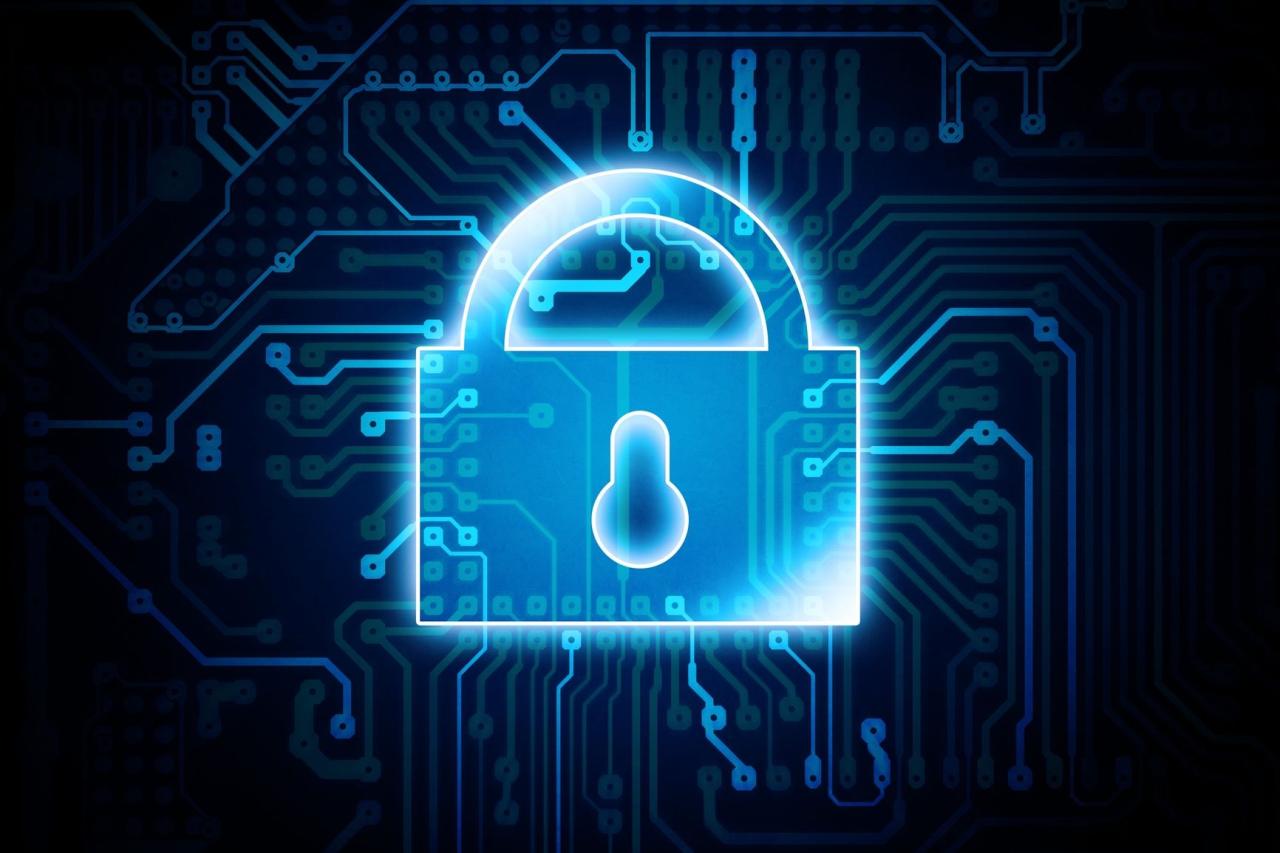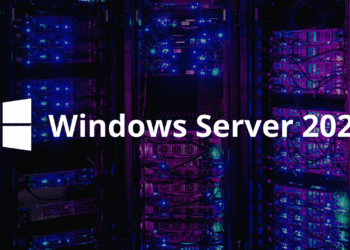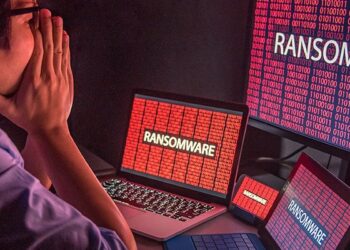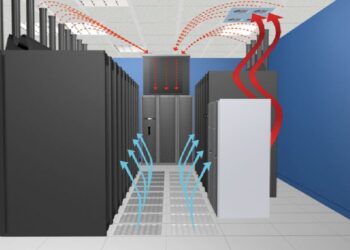In our ever-evolving digital landscape, securing servers has become a paramount concern for businesses, governments, and individuals alike. With cyber threats continuously advancing in sophistication, protecting server infrastructure requires a multifaceted approach that combines both traditional practices and modern, innovative techniques. This article provides an in-depth exploration of server security, detailing historical developments, contemporary challenges, essential best practices, and future trends. By understanding the intricacies of server security, organizations can build robust defenses that not only thwart potential attacks but also ensure continuous service availability and data integrity.
Server security encompasses a broad range of strategies designed to protect the hardware and software that power the backbone of digital communications and data storage. As the reliance on cloud services, big data, and interconnected networks grows, the importance of safeguarding servers from malicious activities cannot be overstated. This comprehensive article delves into various aspects of server security in the digital age. We will examine the evolution of threats, outline critical measures to prevent breaches, and offer actionable insights to help organizations maintain a secure server environment. Throughout this discussion, we emphasize practical steps and advanced methodologies, making this guide a valuable resource for IT professionals and cybersecurity enthusiasts.
The Evolution of Server Security
Server security has dramatically evolved over the past few decades. Initially, when digital systems were limited and the internet was in its infancy, basic security measures such as password protection and physical security were considered sufficient. However, as technology advanced and networks expanded, so did the methods employed by cybercriminals. Today, the spectrum of threats includes sophisticated malware, ransomware, phishing schemes, and state-sponsored cyberattacks.
Historical Overview
In the early days of computing, servers were typically isolated systems with limited connectivity. Security primarily focused on physical access control and simple authentication methods. As networked environments and internet connectivity became prevalent, attackers quickly discovered vulnerabilities that could be exploited remotely. Over time, server security evolved to include a mix of hardware firewalls, intrusion detection systems (IDS), and more refined encryption techniques.
Key Milestones in Server Security Development
A. Introduction of Firewalls: The implementation of network firewalls revolutionized the way organizations protected their servers by filtering incoming and outgoing traffic based on predetermined security rules.
B. Rise of Intrusion Detection Systems: IDS tools emerged to monitor network traffic in real time, providing alerts when unusual activity was detected, thereby enabling faster responses to potential breaches.
C. Development of Encryption Protocols: The advent of secure communication protocols like SSL/TLS helped protect data in transit, ensuring that sensitive information was not easily intercepted.
D. Adoption of Multi-Factor Authentication: Enhancing traditional password systems with additional layers of verification significantly increased the difficulty for unauthorized users to gain access.
E. Cloud-Based Security Solutions: The growth of cloud computing led to the development of scalable security solutions that could adapt to the dynamic nature of modern data centers and server farms.
Modern Threat Landscape
Today’s digital world presents an array of sophisticated threats that are continuously adapting to new defense mechanisms. Understanding these threats is the first step in developing an effective security strategy.
Common Threats Facing Servers
-
Malware and Ransomware: Malicious software is designed to infiltrate and damage systems. Ransomware, a particularly destructive type, encrypts critical data and demands payment for decryption.
-
Distributed Denial-of-Service (DDoS) Attacks: In these attacks, multiple compromised systems flood a server with traffic, overwhelming its resources and rendering it unable to serve legitimate users.
-
SQL Injection and Code Exploits: These attacks target vulnerabilities in web applications, allowing attackers to execute malicious code and gain unauthorized access to databases.
-
Advanced Persistent Threats (APTs): APTs are long-term, stealthy campaigns where attackers infiltrate a network and remain undetected while they exfiltrate sensitive information.
-
Phishing and Social Engineering: Often considered the gateway for cyberattacks, these methods trick individuals into divulging confidential information that can be exploited to breach server defenses.
The Impact of Evolving Threats
The rapid evolution of cyber threats means that server security must be a continuous, adaptive process. Even robust systems can become vulnerable if security measures are not regularly updated to counteract the latest tactics used by cybercriminals. Organizations must therefore invest in both technological solutions and skilled personnel to monitor, analyze, and respond to security incidents in real time.
Essential Server Security Practices
Implementing a comprehensive server security strategy requires a blend of proven techniques and modern innovations. The following best practices provide a foundation for securing server infrastructure effectively.
A. Regular Software Updates and Patches
Keeping server operating systems and applications up to date is critical. Software developers frequently release patches to address known vulnerabilities, and failing to apply these updates promptly can leave servers exposed to attacks.
- Establish a Patch Management Policy: Develop a routine schedule for applying updates and ensure that all components of your server environment are covered.
- Test Patches Before Deployment: To minimize disruptions, test new patches in a controlled environment prior to full-scale implementation.
- Automate Updates Where Possible: Leverage automation tools to streamline the update process and reduce human error.
B. Implementing Strong Access Controls
Robust access control measures are vital to prevent unauthorized access. This involves more than just setting strong passwords; it requires a layered approach to authentication.
- Utilize Multi-Factor Authentication (MFA): Require additional verification steps beyond passwords.
- Adopt Role-Based Access Control (RBAC): Limit access to sensitive data and server functions based on user roles.
- Regularly Audit User Accounts: Ensure that inactive or unnecessary accounts are promptly deactivated.
C. Network Segmentation and Firewalls
Dividing your network into smaller segments helps contain breaches and limits the movement of malicious actors.
- Deploy Internal Firewalls: Use firewalls not only at the perimeter but also within your network to create secure zones.
- Implement Virtual Local Area Networks (VLANs): Separate critical systems from less sensitive ones.
- Monitor Network Traffic: Continuously analyze traffic for unusual patterns that might indicate a breach.
D. Data Encryption and Secure Communication
Encrypting data, both at rest and in transit, ensures that even if unauthorized access is gained, the information remains protected.
- Apply Strong Encryption Standards: Utilize protocols such as AES for data storage and TLS for communications.
- Enforce Secure File Transfer Protocols: Replace insecure protocols like FTP with SFTP or FTPS.
- Regularly Update Encryption Keys: Change keys periodically to minimize the risk of compromise.
E. Backup and Disaster Recovery Plans
Having reliable backup solutions and recovery plans in place is essential for minimizing downtime and data loss following an attack.
- Maintain Regular Backups: Schedule automated backups and verify their integrity.
- Store Backups Securely: Keep backup copies in secure, offsite locations.
- Develop a Comprehensive Disaster Recovery Plan: Outline procedures for quickly restoring operations after a security incident.
F. Employee Training and Awareness
Employees often represent the weakest link in the security chain. Regular training and awareness programs can significantly reduce the risk of human error.
- Conduct Regular Security Trainings: Educate employees on the latest cyber threats and safe computing practices.
- Simulate Phishing Attacks: Run drills to test employee responses and improve their awareness.
- Promote a Culture of Security: Encourage staff to report suspicious activities without fear of reprisal.
Advanced Security Measures
Beyond the fundamental practices, advanced security measures provide additional layers of protection and help organizations stay ahead of emerging threats.
A. Intrusion Detection and Prevention Systems (IDPS)
IDPS solutions monitor network and system activities for malicious behavior, enabling proactive responses to potential threats.
- Deploy Network-Based and Host-Based Systems: Use both approaches for comprehensive coverage.
- Integrate with SIEM Solutions: Security Information and Event Management systems correlate data from multiple sources to identify anomalies.
- Continuously Update Signatures: Keep the detection algorithms current to catch the latest threats.
B. Security Information and Event Management (SIEM)
SIEM platforms aggregate and analyze logs from various systems, providing a centralized view of security events.
- Implement Real-Time Monitoring: Ensure that security events are detected and responded to promptly.
- Utilize Correlation Rules: Identify patterns across multiple logs to detect complex attacks.
- Automate Incident Response: Integrate SIEM with automated response tools to minimize reaction times.
C. Zero Trust Architecture
Zero Trust is a security model that assumes no entity, inside or outside the network, is inherently trustworthy. Every access request is rigorously verified before granting access.
- Adopt Micro-Segmentation: Divide the network into granular segments to enforce strict access controls.
- Implement Continuous Authentication: Regularly re-authenticate users and devices throughout a session.
- Leverage Identity and Access Management (IAM): Use robust IAM systems to enforce zero trust policies.
D. Virtualization and Container Security
As organizations increasingly adopt virtualized environments and containerized applications, securing these platforms is essential.
- Harden Hypervisors: Apply security best practices to the virtualization layer.
- Isolate Containers: Use container orchestration platforms to isolate workloads and limit lateral movement.
- Regularly Scan for Vulnerabilities: Employ automated tools to detect and remediate security issues in virtual and container environments.

Maintaining Compliance and Regulatory Standards
In addition to technical measures, adherence to regulatory requirements and industry standards is crucial for server security. Compliance not only helps in avoiding legal penalties but also instills trust among customers and partners.
A. Understanding Relevant Regulations
Different industries are subject to a range of regulatory frameworks that dictate how data must be protected.
- General Data Protection Regulation (GDPR): This European regulation imposes strict requirements on data privacy and security.
- Health Insurance Portability and Accountability Act (HIPAA): In the United States, HIPAA sets standards for protecting patient information.
- Payment Card Industry Data Security Standard (PCI DSS): Businesses handling credit card data must adhere to PCI DSS requirements.
- Other Regional and Industry-Specific Regulations: Depending on the location and sector, additional regulations may apply.
B. Developing a Compliance Strategy
To ensure continuous adherence to these regulations, organizations should implement a structured compliance strategy.
- Conduct Regular Audits: Periodically assess the security posture and identify areas for improvement.
- Document Policies and Procedures: Maintain clear, written policies for all security and data management processes.
- Engage Third-Party Assessors: Utilize external auditors to evaluate compliance and provide unbiased feedback.
- Invest in Employee Training: Educate staff about regulatory requirements and their role in maintaining compliance.
C. Benefits of Compliance
Adhering to regulatory standards provides several advantages beyond legal compliance.
- Increased Customer Trust: Demonstrating a commitment to data protection can enhance brand reputation.
- Reduced Risk of Data Breaches: Compliance measures often align with best practices in cybersecurity.
- Financial Incentives: Some regulatory frameworks offer incentives for maintaining robust security measures.
Strategies for Continuous Improvement
In the dynamic realm of cybersecurity, maintaining a secure server environment is an ongoing process. Continuous improvement strategies ensure that security measures evolve to meet emerging threats.
A. Regular Security Assessments
- Conduct Vulnerability Scans: Regularly scan servers and networks for vulnerabilities.
- Perform Penetration Testing: Simulate attacks to identify weaknesses before adversaries do.
- Review Security Policies: Update policies based on the latest threat intelligence and industry trends.
B. Embracing a Proactive Security Culture
Building a proactive security culture is essential for long-term success.
- Foster Open Communication: Encourage reporting of security incidents and potential vulnerabilities.
- Invest in Continuous Training: Keep IT and security teams up-to-date with the latest developments in cybersecurity.
- Engage in Threat Intelligence Sharing: Collaborate with industry peers to exchange information about emerging threats.
C. Leveraging Automation and Artificial Intelligence
Automation and AI are transforming the cybersecurity landscape by enabling faster threat detection and response.
- Deploy Automated Security Tools: Use automated systems for monitoring, threat detection, and incident response.
- Integrate Machine Learning Algorithms: Employ AI to analyze vast amounts of data and predict potential security incidents.
- Optimize Incident Response: Automate repetitive tasks to free up human resources for more strategic security initiatives.
Future Trends in Server Security
As the digital age progresses, new technologies and methodologies will continue to shape the future of server security. Understanding these trends can help organizations prepare for the challenges ahead.
A. The Rise of Quantum Computing
Quantum computing promises unprecedented computational power, which may render current encryption techniques obsolete. Preparing for a quantum future will involve:
- Researching Post-Quantum Cryptography: Develop encryption algorithms that are resistant to quantum attacks.
- Investing in Quantum-Resistant Infrastructure: Transition gradually to systems designed to withstand quantum computing threats.
- Monitoring Quantum Advancements: Stay informed about breakthroughs in quantum computing to adjust security strategies accordingly.
B. The Increasing Role of Cloud and Edge Computing
With more businesses moving to cloud-based infrastructures and edge computing environments, securing these decentralized networks becomes critical.
- Adopt Cloud-Native Security Solutions: Leverage tools designed specifically for cloud environments.
- Implement Distributed Security Measures: Ensure that both centralized data centers and edge devices are protected.
- Continuously Monitor Cloud Configurations: Regularly audit cloud environments for misconfigurations that could expose vulnerabilities.
C. Integration of Behavioral Analytics
Behavioral analytics uses data analysis to detect unusual patterns that might indicate a security breach. Future server security strategies may rely heavily on:
- User Behavior Analytics (UBA): Identify deviations from normal user behavior to detect potential insider threats.
- Anomaly Detection Systems: Employ algorithms that continuously learn and adapt to new threat vectors.
- Proactive Threat Hunting: Use analytics to proactively search for indicators of compromise within server environments.
D. Enhanced Collaboration Between Human and Machine
The future of server security lies in a seamless integration of human expertise with automated systems.
- AI-Augmented Security Teams: Enhance human decision-making with AI-driven insights.
- Collaborative Incident Response: Foster collaboration between security teams and automated systems to respond faster to threats.
- Continuous Feedback Loops: Implement systems that learn from each incident, continuously improving both automated defenses and human protocols.

Practical Guidelines for Server Administrators
Server administrators play a critical role in the maintenance and security of digital infrastructure. Below are practical guidelines designed to empower administrators with the knowledge and tools they need to build a resilient server environment.
A. Establish Clear Security Policies:
- Develop and maintain documented security procedures and policies.
- Ensure that all team members understand their roles and responsibilities.
- Regularly review and update policies to reflect new threats.
B. Implement Redundancy and Failover Solutions:
- Design server architectures that include redundancy to maintain uptime during attacks.
- Use load balancing and failover systems to distribute traffic efficiently.
- Regularly test backup systems to ensure quick recovery in the event of an incident.
C. Invest in Monitoring and Alert Systems:
- Deploy monitoring tools that provide real-time insights into server performance and security.
- Set up alerts for suspicious activities or abnormal traffic patterns.
- Integrate monitoring systems with incident response plans to streamline troubleshooting.
D. Conduct Regular Security Drills:
- Simulate cyberattacks to test the effectiveness of your response strategies.
- Engage all relevant teams in drills to ensure a coordinated response.
- Analyze drill outcomes to identify areas for improvement and update training protocols.
E. Foster a Culture of Continuous Learning:
- Encourage participation in cybersecurity conferences and training sessions.
- Subscribe to threat intelligence feeds to remain informed about the latest trends.
- Establish mentorship programs to share expertise within the team.
Conclusion
Server security in the digital age is a complex, ever-evolving challenge that requires a proactive and comprehensive approach. By understanding the historical context, acknowledging modern threats, and implementing a blend of fundamental and advanced security practices, organizations can significantly reduce their risk exposure. From regular software updates and strong access controls to advanced measures like zero trust architecture and AI-driven threat detection, every element plays a crucial role in safeguarding critical digital infrastructure.
As cyber threats continue to evolve, so too must our security strategies. Continuous improvement, adherence to regulatory standards, and the integration of emerging technologies will be vital for defending against tomorrow’s attacks. Ultimately, a secure server environment not only protects sensitive data but also ensures business continuity, instills customer confidence, and supports long-term innovation.
By following the guidelines outlined in this article and committing to a proactive security posture, organizations can create resilient, adaptive systems capable of thriving in today’s dynamic digital environment.










